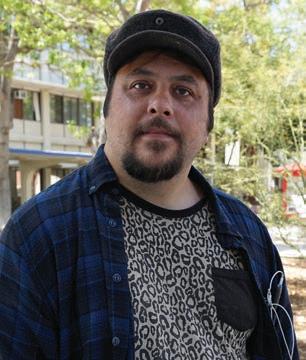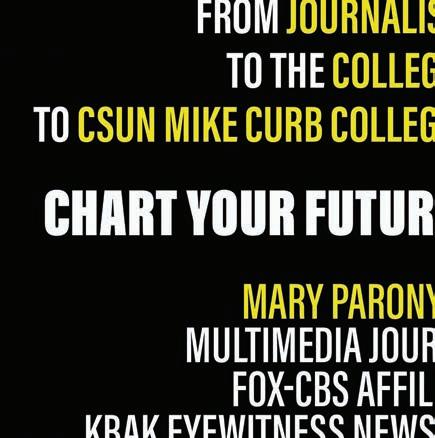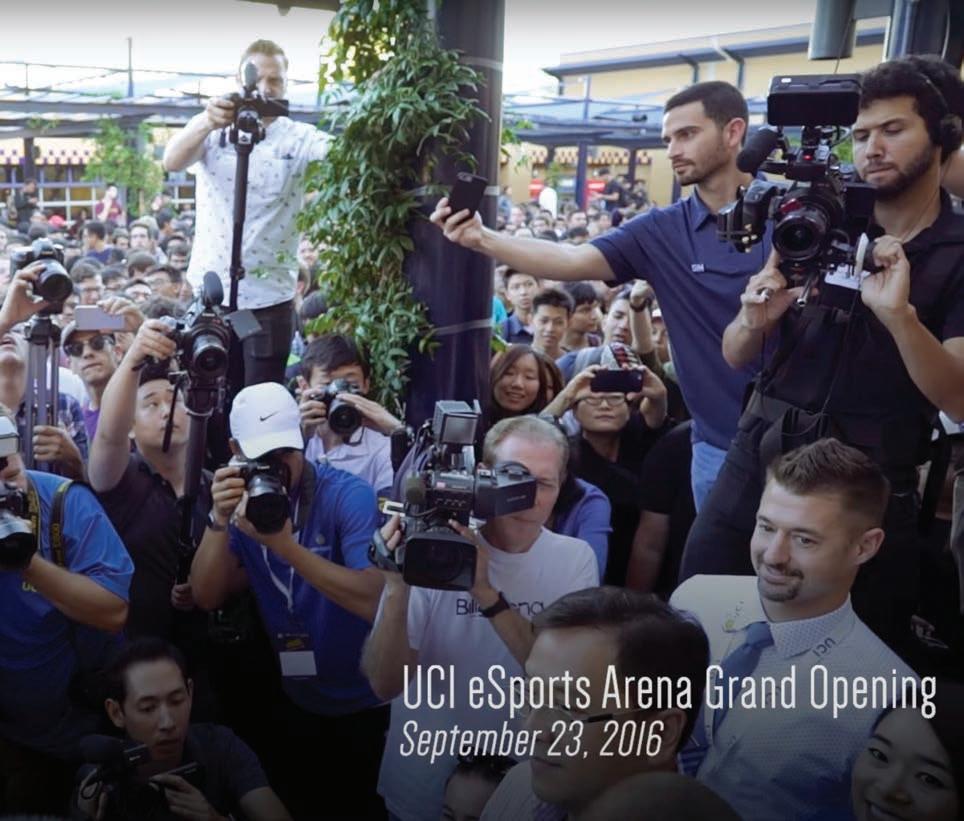LOS ANGELES



Wednesday, April 26, 2023








 BY ANTHONY FOLSOM
BY ANTHONY FOLSOM
The current trend of mass shootings seems to be on an upswing as it cuts short the lives of some younger Americans with the most recent incident on April 15, in Dadeville, Ala.
Four teenagers were shot and killed, and another 32 people injured -- some critically, at a birthday party.




The most recent school mass shooting was in Nashville, where a gunman killed three children and three adults. The frequency of shootings has caused some students and college families to worry that their school could deal with something similar, even locally.
Research from the Kaiser Family Foundation (KFF) shows that guns are the leading cause of death for children in the United States.

The 2022 study defined children as 1-19 years old, and gun violence included homicides, accidents and suicide.

“I am scared, mostly due to the growing cases of violence on our campus,” said Sandra Thuesday a microbiology major at LACC who expressed concerns over safety. She is not certain how the L.A. Sheriff’s Department (LASD) on campus would respond.

“I’m not very confident if I must be frank, I’m not even sure they are well trained in the firearms that they carry themselves,” she said.
BY JUAN MENDOZAProfessor Jose Rodriguez teaches in Franklin Hall in the English Literacy/Citizenship Program. His class was alone in the building one evening last spring.
Students from his class summoned the courage to speak to him about their campus experiences, and how they felt unsafe while on campus. He listened to their complaints. They talked about people from "outside" who were smoking marijuana on campus, or walking large dogs unleashed on the college grounds.
They complained about skateboarders weaving in front of pedestrians as they walk across campus. Students also expressed fear and described uncomfortable encounters with unhoused individuals inside the campus restrooms.

Professor Rodriguez decided to investigate the incidents. He says the students’ concerns were true.
Incidents at Night Cause Fear
“No security at all," Rodriguez said. "And that made me wonder [if] something was wrong with the security on campus.”


A few months ago, the professor says the class witnessed a naked transient man walking down the hallway. He immediately reported it to the sheriff’s station, but to his surprise, they were not able to detain the unclothed person.
“If someone is walking naked on campus and security is not able to detain him, something is wrong,” Rodriguez said.




Rodriguez decided to look for answers to his students' concerns. He wrote an email to L.A. City College President Mary Gallagher, to President of the AFT Chapter at L.A. City College, Christine Park, and Dean Imelda Perez, assistant dean of the Noncredit and Adult Education Department.
BY ALONDRA LEMUS
os Angeles is a host to a growing number of community fridges, which have been popping up all over the country. Vibrant colored refrigerators contain food for anyone in need. L.A. Community Fridges are neither non-profit nor government funded. They are run entirely by volunteers within the community. Their mission statement is straightforward, “Los Angeles Community Fridges is a network of decentralized, independent refrigerators and pantries that provide food and vital supplies to our communities through mutual aid.”
BY EDWARD LOCKEtudents made their way to the Student Union and lined up for hot lunch courtesy of the South Korean Joongang Tongyang Broadcasting Company (JTBC), a South Korean nationwide pay television network on April 11.

The group came to campus to film an episode of a Korean Lunch Tray reality show, and LACC students were among the invited guests. Students munched on Mandu, classic Korean dumplings filled with ground pork, tofu, garlic chives, and ginger. They ate radish kimchi, pork backbone stew and other Korean specialties, including dalgona, a Korean candy made with melted sugar and baking soda. It is a popular street snack from the 1960s in South Korea.
Diners sat at 20 tables inside the Student Union, and around 200 participants lined up for a chance to enjoy the meals.
The event gave participants an opportunity to try some typical Korean food items. Students received a 10 by 15-inch stainless steel tray with chopsticks and a fork and about six different food items. The tray is identical to the model used for students in the free lunch program in South Korea.
The food must have been delicious. Some students returned for second servings. After lunch, guests voted on their impression of each food item. The shrimp minari jeon and the pork backbone stew were the winners. The Department of Modern Languages & Civilization organized the event.

Essential Workers Are Still Essential
BY KIMBERLY CARRILLOFrom 2020 until now, it has been a long couple of years, to say the least. The COVID-19 pandemic halted all our lives, ruined plans and tragically ended lives.
During this adjustment, one of the biggest fears I remember was if and when supermarkets would close. I wondered how we would get food. I worried that the produce would be contaminated with the virus. And who the heck bought all the damn toilet paper?
So, who do we need to thank during this time and now? Grocery store workers. But when did our time of being “essential" come to an end?
I worked at a grocery store during the second year of Covid. There was not a day when strangers did not thank me for coming to work.
During this time, supermarkets spent billions of dollars on PPE equipment, raised employee pay, and gave several free “sick hours” to employees who contracted COVID.

The media called us “heroes” because we went to work, stocked produce and baby formula and accounted for shipments. God knows where it was packaged and by (God knows) who, all while risking our lives. It was nice at first to be recognized for what was not the most lavish job, but after a while, it began to feel fake. For a lot of employees, asking customers to respect the mask mandate was nerve-wracking, as we never knew what kind of reaction we would receive.
According to NBCnews.com, “Anti-mask views or laxity by some customers have placed workers in the difficult position of balancing personal and store safety with an ethos that ‘the customer is always right.’”
Countless videos came out every day of an anti-masker in a screaming match with a cashier or manager.
A plethora of comments garnered millions of views with every video. Some of which were rational, some emotional, and some political. And some employees commented on their own experiences and frustrations with customers and management alike. How do I ask this person to pull their mask up without offending them? How do I ask them to please put a mask on when inside the store? How do I politely step six feet away when they are invading my space?
It is now April 2023. Since 2020, vaccines are now available, mask mandates have been lifted and classes have returned to in-person again.
As we go about our busy lives in an attempt to get back to “normal,” keep in mind that “normal” has, in fact, changed since 2020.
For many grocery store workers, fast-food employees and janitorial staff, the past few years were full of highs and lows regarding their rights and values. From hailed as “essential” and then left in the back to be forgotten. Many still deal with the emotional repercussions of being deemed “essential” and if they’ll ever be again.
Journaling for Better Health
BY ALONDRA LEMUSJournaling, whether in a notebook or a computer, has so many benefits for our mental health.
According to the American Foundation for Suicide Prevention, suicide is the 12th leading cause of death in the U.S. In 2020 alone, there were 1.2 million suicide attempts. The National Alliance on Mental Illness states that in 2020, one in five adults experienced mental illness, one in six children and youth ages six to 17 experience a mental health disorder each year, and suicide is the second leading cause of death among children 10 to 14 years of age.
As stated by the Centers for Disease Control and Prevention, suicide rates have increased by 36% between the years 2000 to 2018, with males having a four times higher rate of suicide than females.

How has the country’s suicide rate gone up if we are so much more knowledgeable now as a society over mental illness than we were 50 years ago?
Being in the era of technology, a great amount of information is available to us in the palm of our hands. It can be overwhelming. Social media, cyberbullying, the demands of work, COVID-19, the opioid crisis and wars can all
A Gentrified Hollywood Creates Problems for its Residents
influence our state of mind.
Journaling is a way to get out thoughts or say things you may never dare to say out loud. It is a form of expression that can feel so liberating.
The University of St. Augustine for Health and Sciences tells us how journaling can benefit us. It improves mental and physical health, encourages self-confidence, helps achieve goals, inspires creativity, boosts memory, enhances critical thinking skills and strengthens communication and writing skills.

There is no right or wrong way to start a journal; it is your own.
You can even have a journal for different aspects of your life.
A creativity journal for inspiration is a way to get your imaginative thoughts down.
A therapy one that can be used to vent about the troubles of life, triggers, how to overcome trauma and for self-reflection.
A gratitude journal, where one can write about the things they are grateful for and the moments of happiness in one’s day leading to a more mindful life.
Keeping a notebook that is just dedicated to the to-do list will help you attain goals and become more organized.
The beauty of journaling is that those words are yours, and it is so simple to start. Nowadays, you can even go to a local bookstore and find journals with prompts to help you start writing. In a time when mental health issues are on the rise, we must find ways to cope with the ever-evolving world around us.
BY BRIAN LEON-LARALocal businesses are torn down, and gas stations are closed. Why?
To build new apartment buildings all over our already very populated city. The excuse they use is to build affordable housing, but we all know that is not true. Even when they create “affordable housing,” it can result in a one-bedroom apartment that rents for $3000 per month.
Someone who earns minimum wage and has other bills cannot pay that. Our city is going through a process of gentrification.
Los Angeles is thought to be different by outsiders that clearly have the wrong picture because all they think about is

“Hollywood.”
I have first-hand experience of what it is like after attending Hollywood High School for four years. Let me just tell you, it is very different from what outsiders think.
Hollywood is overpopulated with people hustling for money. Homelessness and people high on drugs are out of control. There is rampant crime.
People there either do tricks or sell CDs that probably have no recorded songs inside. They take the CD and then get harassed to pay. Don't tourists know this? I saw many fall for the scam.
Every Los Angeles resident knows the true colors of our city. We struggle to get from one point to another as the number of cars on the freeway is already
insanely high.
I am not against people coming here, but only if it is to make our city better.
The construction of new buildings does not help communities that depend on the stores being demolished. Small businesses suffer and close.
If affordable housing ever becomes a reality, hopefully, it will help our city’s homeless crisis. Building new apartments will not help our overpopulated city unless they are for the homeless. That is probably not the case because they have been saying the same thing for the past 10 years.
Don’t get me wrong. I love our city. The diversity is unique, and there are so many cultures. But I do not agree with how we manage the overpopulation problem.
Say Yes to Online Learning, Please!


There must be something magical about bringing education to your home. You wake up, do your morning routine, then ZAP! You are sitting in front of your professor (most likely with your camera off), learning about the quadratic equation or, in my case, the importance of a thesis statement.
Even if you are a couple of minutes late, hardly anyone will notice. Gone are the days when you walk into a class late with a bunch of eyeballs staring you down.
No more need to wake up hours early to get stuck in traffic on the 110 Freeway. No more need to run to catch a bus or sit next to strangers on the train or in class. And no more need to spend time with make-up or to put on going-out clothes.

Yes, take back control of your life. Take back all that time spent
getting to school and make it happen in your home, on your time! Say yes to flexibility and independence.
Online school lets students acquire the optimal school-life balance. We develop self-reliance and really learn at our own pace.
Granted, I know it might be difficult to stay focused since we can get too comfortable, but when has it ever been easy to stay focused? Even in in-person classrooms, students doze off or stare out the window dreaming about being home. (I know I have done it.) At least it will save you some embarrassment when you get caught.
But seriously, online learning is great because it is so convenient. All you need is an internet connection and a digital device which most people have anyways.
Even though online courses are not ideal for all majors (such as those that require hands-on
experience), they can work for most general education classes. Online learning lets you get ahead of the game and at your preferred schedule.
Not only that, but online education appeals to people of all backgrounds, including parents, single parents, full-time workers, part-time workers, disabled people, elderly people, and young people. It is inclusive and accessible to us all.
What seemed like a curse at the beginning of the pandemic (the transition to online learning, I mean) turned out to be quite the blessing. As the world progresses, students need to keep up. Online provides us with that extra support we need to give us the space to thrive.
So, I give thanks to all the other students and professors, to computers and the internet, but most importantly to Zoom, for magically transforming our homes into classrooms.
BY
 COMPILED
KATHARINE FORD PHOTOS BY BEATRICE ALCALA
COMPILED
KATHARINE FORD PHOTOS BY BEATRICE ALCALA
Honestly, I think security on campus … honestly, it’s just a little bit low. It’s like just one of those things, but if you feel like something [is] happening, it’s … just gone and there’s not really much you can do about it. The stabbing incident in the fall semester … that was like after when I left, it was like I just got notification, like a few minutes after I left campus. It’s like, oh God, that could have been me.




I never had any issues with it. I don’t really know a whole lot about it, to be honest with you.
I think it’s your typical everyday school type of security… because when I was in school …there were like cops up at the school like there was always a sheriff. This really to me, it’s nothing new.
I definitely think security does as best they can, given the area that we’re in.
However, I do think it could be improved. I just think that there should be more people patrolling, and I think our cameras should be improved. I know that we can’t gate off the area because I heard we were supposed to be open to the city. But I think that gating up some of the areas would keep us a little bit safer.
CAMPUS CELEBRATION
BY EDWARD LOCKEarth Day unfolded in the small park under blue skies in the area between the City's Garden and the Martin Luther King Library on April 20, from 11:30 a.m. to 1:30 p.m.






Professors Sean Phommasaysy, and Gayle Stafsky from the Dietetics Program organized the event, and around 250 participants joined the activities. Attendees lined up for a handful of free tickets that entitled them to free hot dogs, Subway lunch boxes with cookies and Italian, tuna, ham, vegetable, or other sandwich varieties.
Attendees filled up on candy and chocolate bars, and they participated in games and other activities. The dietetics program team offered sugar free popsicles for the calorie conscious.
Children’s Hospital of Los Angeles hosted several playful activities where participants held plastic arrows or stuffed dolls and launched them into holes. They received packets of information booklets on ecologically sustainable lifestyles published by American Chemical Society. The literature features URLs for relevant websites and webpages such as www.ecy.wa.gov/biblio/0307017. html, www.recyclingexpert.co.uk/, http://www.epa. gov/earthday, www.earthday.org,
President Mary Gallagher attended part of the event and spoke about the importance of Earth Day and conservation. She says the celebration puts people in tune with preserving the planet.

“I am always very excited to celebrate ... because our future depends on the decisions we make today, about preserving our entire existence, so that we are not wasteful, so that we are reusing, recycling and limiting the amount of things that go into our landfills, we have to really, really raise up our awareness, of what we are doing to our beautiful planet," President Gallagher said.
The president called the City Garden a testament to what can be accomplished in a couple of years to improve the environment.
On the fruit bar table, BBQ Meal Worm and Sriracha Crickets packages and cans made in Korea were offered to participants to taste exotic or alternative foods from other cultures. The City Garden’s management team members offered pots of cactus, asparagus, and other plants for participants to take home for a small donation.
Two-Bit Circus Foundation displayed recyclable materials in trash bins, plastic crates and boxes. They also showed furniture made from recyclables donated by local manufacturers. (https:// twobitcircus.org, victoria@TwoBitCircus.org).
 BY EDWARD LOCKE
BY EDWARD LOCKE
small group of students gathered in Holmes Hall for a screening of a film called "The Promise," which recalls the struggle of Armenians for freedom from Ottoman Turkish oppression and the tragedy of the Armenian Genocide on April 24, in Holmes Hall.
It was Armenian Genocide Remembrance Day and the Associated Student Government (ASG) sponsored the early evening screening.
The event was intended to reflect on the first genocide of the 20th century, the Armenian Genocide. In 1915, the Turkish Ottoman Empire deported and massacred one and a half million Armenians.


"The Promise" is a 2016 American epic historical war drama film directed by Terry George, from a screenplay he co-authored with Robin Swicord, who is best known for her work on Oscar-winning film, "The Curious Case of Benjamin Button."
"The Promise" premiered on Sept. 11, 2016, at the Toronto International Film Festival. Open Road Films released it in
the United States on April 21, 2017, on the 102nd anniversary of the week the genocide started.






The story is set in the final years of the Ottoman Empire; and the plot is about a love triangle between Mikael, an Armenian medical student, Chris, an American journalist, and Ana, an Armenian-born woman raised in France, immediately before and during the Armenian Genocide. The movie shows many shocking scenes of violence and inhumanity before and during the Armenian Genocide committed by Ottoman Turkish authorities. These include, among many other incidents, the roundups of Armenian dissidents on April 24, 1915.




There was the forced conscription of Armenian youth into the Ottoman army, the armed resistance of Armenian guerrilla fighters against Ottoman troops, the massacres of unarmed Armenian refugees, and brutal mistreatment of Armenian workers by Ottoman soldiers.
The film also portrays the courage of Chris Myers, an American reporter for the Associated Press and his investigation and reports on the atrocities committed under Ottoman rule. "The Promise" can
Polished Magazine, Lasell College, Newton, MA.
1. Alyshia Korba, “IC Trustee Continues to Hold Power Despite Credible Abuse Allegations,” The Ithacan, Ithaca College, Ithaca, NY;
2. Maya Wilkins, “The First Domino,” The Ball State Daily News, Ball State University, Muncie, IN;
3. Sorina Szakacs, “Final Say on Disabled Lawsuit Could Rest with Supreme Court,” Collegian, L.A. City College, Los Angeles, CA;

Intersects,” Collegian, L.A. City College, Los Angeles, CA;
2. Ashima Agnihotri, “Redpath Trial Brings Art AR to Harbour Front,” Et Cetera, Humber College, Toronto, Ontario;
3. Eva Salzman, “Queer Sex Work Exhibit Educates IC Students,” The Ithacan, Ithaca College, Ithaca, TX
CM. Stefan Townes, “Dave Chappelle is a Relic, It’s Time to Retire Him,” Indiana Daily Student, Indiana University, Bloomington, IN
1. Louis White, Collegian Times, Los Angeles City College, Los Angeles, CA;
2. Henry Cohen and John Ofstedal, OR Magazine, University of Oregon School of Journalism and Communication, Eugene, OR.
1. Beatrice Alcala, Collegian Times, Los Angeles City College, Los Angeles, CA;
2. Staff, Distraction, University of Miami, Coral Gables, FL;
3. Gigi Rutsky, Flux, University of Oregon, Eugene, OR;
CM. Dylan Sokolovich, Legacy, Reading Area Community College, Reading, PA;
CM. Staff, Distraction, University of Miami, Coral Gables, FL;
CM. Staff, Distraction, University of Miami, Coral Gables, FL.
1. Jillian Regan, “On The Basis of Success,” Flux, University of Oregon, Eugene, OR;
2. Gigi Rutsky, “High School Students Fight for Representation In Newberg,” Flux, University of Oregon, Eugene, OR;
3. Sydney Sullivan, “Art and Soul,” Flux, University of Oregon, Eugene, OR;
CM. Beatrice Alcala, “Ruby or not Ruby,” Collegian Times, Los Angeles City College, Los Angeles, CA;
CM. Lauren Maingot, “Super Pan,” Distraction, University of Miami, Coral Gables, FL;
CM. Isa Marquez, Brought to LIfe, Distraction, University of Miami, Coral Gables, FL.
1. Beatrice Alcala, “Students Launch New Effort Marcus Garvey Name,” Collegian Times, Los Angeles City College, Los Angeles, CA;
2. Alex Hindenlang, Memories of Manhattan, “The Ball State Daily News,” Ball State University, Muncie, IN.
1. Beatrice Alcala, “City Rests on Hallowed Ground,” Collegian, Los Angeles City College, Los Angeles, CA.
1. Arianna Flores and Téa McGilvray, “Path to the Present,” The Daily Toreador, Texas Tech, Lubbock, TX;
2. Beatrice Alcala, “The Day of the Dead,” Collegian Times, Los Angeles City College, Los Angeles, CA;
3. Abbey Douglass and Chyna Vargas, “COVID-19 Remains,” The Daily Toreador, Texas Tech, Lubbock, TX;
CM. Maggie Getzin, “Invaluable Experiences,” The Ball State Daily News, Ball State University, Muncie, IN.
CM. Luke Araujo, “Student Activities to Host Diadeloso after Chamber Receives Hazing Penalties,” The Baylor Lariat, Baylor University, Waco, TX; CM. Elijah de Castro and Alexis Manore, “After Saying that She Would Freeze Her Salary, President Collado's Compensation Increased,” The Ithacan, Ithaca College, Ithaca, NY; CM. Arianna Flores, “Registering Complaints,” The Daily Toreador, Texas Tech, Lubbock, TX.
1. Emma Uber, “Eleanor Lehmann Believes She was Drugged,” Indiana Daily Student, Indiana University, Bloomington, IN;
2. Nicolas Napier, “A Crisis of Faith,” Indiana Daily Student, Indiana University, Bloomington, IN;
CM. Christian Chavez and Louis White, “Cultural Feature: Brit Week Drives Through Beverly Hills,” Collegian, L.A. City College, Los Angeles, CA
CM. Madelyn Kemler, “TikTok Influencers Enable Fast Fashion,” Marist Circle, Marist College, Poughkeepsie, NY.
1. Michael Sitar, “My Eggs My Choice,” Collegian, L.A. City College, Los Angeles, CA;
2. Morgan Dowler, “Black History Month,” The Baylor Lariat, Baylor University, Waco, TX.
1. Michael Sitar, “A Visual Representation of the World as We Know It,” Collegian, L.A. City College, Los Angeles, CA;
1. John A. Johns, Sorina Szakacs and Jonathan Valdovinos, “Remain in Mexico,” Collegian Times, Los Angeles City College, Los Angeles, CA.
1. Rachel Hubbard, Jonathan Kyncl and Beth Wallis, “Fight for Life on Oklahoma's Death Row,” The Oklahoma Daily, Crimson Quarterly magazine, University of Oklahoma, Norman, OK;
2. Frankie Walls, “The Intersection,” The Ithacan, Ithaca College, Ithaca, NY;
3. Sorina Szakacs, “Disabled Students Speak Out,” Collegian Times, Los Angeles City College, Los Angeles, CA;
CM. Sydney Brumfield, “Deja View,” The Ithacan, Ithaca College, Ithaca, NY;
CM. Staff, “Varsity Clues,” Emerge Magazine, University of Guelph-Humber, Toronto, Ontario;
1. Alex Hindenlang, “Deconstructing Deforestation,” The Ball State Daily News, Ball State University, Muncie, IN;
2. Beatrice Alcala and Louis White, “Armenian Genocide,” Collegian Times, Los Angeles City College, Los Angeles, CA;
3. Mallorey Daunhauer and Carson TerBush, “How the Trojan Horse is Surviving the Great Resignation,” Indiana Daily Student, Indiana University, Bloomington, IN;
CM. Ava Dunwoody and Rachel Royster, “Students' Resilience Pays Off as Normalcy Returns to Baylor,” The Baylor Lariat, Baylor University, Waco, TX;
CM. Ava Dunwoody, “Homecoming History,” The Baylor Lariat, Baylor University, Waco, TX;
CM. Malik Clement and Abbey London, “Making a Difference One Batch at a Time,” The Ithacan, Ithaca College, Ithaca, NY.
1. Joan Mao, “Ruby or not Ruby,” Collegian Times, Los Angeles City College, Los Angeles, CA;
2. Emma Ingenohl and Dylan Wilson, “FW 21 Photoshoot,”
3. Angelica Gonzalez Morales, “Building History,” The Ball State Daily News, Ball State University, Muncie, IN; CM. Kaitlyn Radde, “In Prison, Knowledge is Power',” Indiana Daily Student, Indiana University, Bloomington, IN; CM. Sorina Szakacs, “La Brea Avenue: Part of an Icy World,” Collegian Times, Los Angeles City College, Los Angeles, CA;
CM. Samantha Salz, “Pitt Professors Provide Aid to Struggling Ukranians,” The Pitt News, University of Pittsburgh, Pittsburgh, PA.
1. Christian Chavez, “My Grandfather Goes Activist,” Collegian Times, Los Angeles City College, Los Angeles, CA;
2. Elissa Maudlin, “Braiding Through the Boundaries,” The Ball State Daily News, Ball State University, Muncie, IN;
3. Sarah-Mae McCullough, “Between Two Worlds,” Flux, University of Oregon, Eugene, OR;
CM. Owen Thompson, “Blood, Ink and Illustrator,” Emerge Magazine, University of GuelphHumber, Toronto, Ontario;
CM. Maddi Langweil, “Understanding Water Quality with Little Critters,” Marist Circle, Marist College, Poughkeepsie, NY;
CM. Arianna Flores, “Path to the Present,” The Daily Toreador, Texas Tech, Lubbock, TX.
1. Angela Johnson, Juan Mendoza and Sorina Szakacs, “Cultural Feature: History
2. Morgan Dowler, “Homecoming King,” The Baylor Lariat, Baylor University, Waco, TX;
3. Staff, “Sowing a New Normal,” The Oklahoma Daily, Crimson Quarterly magazine, University of Oklahoma, Norman, OK;
CM. Téa McGilvray, “Joe Biden,” The Daily Toreador, Texas Tech, Lubbock, TX.
1. Matthew Rodriguez, “It Takes Time: Fentanyl Stops the Clock,” Collegian Times, Los Angeles City College, Los Angeles, CA;
2. Emily Stellakis, “The Digital Fight for Unionization on Capitol Hill,” Marist Circle, Marist College, Poughkeepsie, NY;
3. Kaitlyn Radde and Carson TerBush, “In the Dark: Transparency Rule Fails to Shed Light on Costs for IU Health Bloomington Patients,” Indiana Daily Student, Indiana University, Bloomington, IN; CM. Brynn Shaffer, “Understanding the Reality of Food Insecurity on Campus,” Los Angeles Loyolan, Loyola Marymount University, Los Angeles, CA; CM. Staff, “Then & Now: The Pruett Story,” The Signal, Ouachita Baptist University, Arkadelphia, AR;
CM. Mason Young, “How Much is One Sooner Worth? Explaining OU's Role in College Football's Head Coaching Salary Boom,” The Oklahoma Daily, Crimson Quarterly magazine, University of Oklahoma, Norman, OK.
CM. Harper Mayfield and Foster Nicholas, “Don't Feed the Bears (Oct. 4, 2022 episode),” The Baylor Lariat, Baylor University, Waco, TX.
1. Louis White, “Breaking the Monolith,” Collegian Times, Los Angeles City College, Los Angeles, CA;
2. Daniel John, “Autophagy: The Immense Benefits of Fasting,” Saltman Quarterly, University of California, San Diego, La Jolla, CA;
3. April Lin, “Implications and Gray Matter of Depersonalization-Derealization Disorder”, Saltman Quarterly, University of California, San Diego, La Jolla, CA;
CM. Daniel John, “Hydrogels: The Structure of Us,” Saltman Quarterly, University of California, San Diego, La Jolla, CA.
He informed them about the complaints from his students and their belief that the sheriffs were not providing adequate security or responding to calls.
The email sent to the administrators was submitted during the time of the Uvalde, Texas, mass shooting in May of 2022, as Rodriguez recalled. At that time, the class was more worried about their safety than before. There was collective fear. His students worried what might happen to them if there was not enough security on campus.
Letter Goes Unanswered
The spring semester ended, and the summer passed, and Professor Rodriguez never received a response to the email that he sent to the administrators.
“Nobody said thank you for the information or said hello," Rodriguez said. "Apparently, it was not ... important for them. And that made me worried. Something can happen because we do not have security at all.”
Rodriguez says that a lot of professors and staff at City College do not want to talk or say anything about the safety problem for fear of retaliation.
After the stabbing death in the parking lot last November, where a former LACC student was slain, Rodriguez says he has seen some improvements in security. There are new locks and more working cameras. However, he says more foot patrol officers are needed.
“The cameras are not going to solve the problem that we have," Rodriguez said. "We need officers that are looking around.”
V.P. Takes on Gaps in Security
The college administration has been working on a stepped-up series of safety and security improvements since the homicide last November.
The installation of upgraded security cameras is complete, and new cameras are being installed in parking lots to complement the emergency blue phones. The college district is working with LACC on a campus perimeter fence project. Work is also underway on an upgrade to the building access control system. Sheriffs are also at work on efforts to reduce response time across the campus.
“Protecting the safety of students, faculty, staff, and the general public is the highest priority for LACC," said Joe Dominguez, the vice president of administrative services. "We strive to provide the highest level of security and peace of mind so that students can learn and flourish. Security awareness, alarm/call response, active monitoring, training, and vehicle policy enforcement all create a safer and more conducive atmosphere for study and collegial support on campus.”
Students and faculty who are on campus at night may have noticed an upgrade to exterior lighting. The goal of the campus lighting program is to provide a safe path that is illuminated at night. New fixtures include wall mount lighting to brighten dark areas in the evening.
Staffing of Sheriffs Raises
Doubts
Recently, Professor Rodriguez went to the college on a weekend to pick up some work and stopped by the sheriff’s station to request access to his office. He says there were no sheriffs or security staff at the post inside the Cesar Chavez Administration Building. He says he waited approximately half an hour to find security to open the office for him.
“It’s very upsetting," he said.
There are times when a female colleague has asked him to escort her to the parking lot at night be-
cause she is afraid to go by herself.
“Ten years ago, there were about 8 to 10 police officers on site," Rodriguez said. "Today, you hardly see sheriffs on campus.”
Other employees are nervous about security. One LACC employee who wanted to remain anonymous says they do not always feel safe on campus.
“There's been some incidents on campus with students having outbursts,” they said. “Sometimes members of the community show up randomly who are not students to vandalize and cause trouble.”
Public Colleges are Open to the Public History major Julia Semendyayeva has heard multiple reports from people she knows about assaults happening to them on campus. She says law enforcement blamed the victim. She recalled a 2018 incident where one male student exposed himself in the library while she was studying.

“That was happening in 2018 when I first came and is happening again this year,” Semendyayeva said. “I think there can be a great relationship between the security and the students. It's just unfortunate it has to be that way.”

Theater major Rebecca Howe says she has seen unhoused people coming into the Theater Building on multiple occasions, and they had to call security.
“I think this campus is more like an open free park for the public, more than a campus," she said. "That's what it feels like. You see people walking their dogs, see people bringing their kids with their bikes.”
Howe recalls an incident last semester with an unhoused individual. The person grabbed a student's keys during a rehearsal. He threatened the professor with the keys and attached to the keys was a little can of mace.
“So, they were actually now threatening the professor with a weapon,” Howe said.
The person threw the keys and ran. Howe says it was a shock to watch the incident as it happened. She says the person was never detained or questioned.
“Security here on campus isn't the greatest, but it's also not the worst. It's satisfactory,” Howe said. There are others who agree with Howe and do not perceive any threats to their security on campus.
“Los Angeles City College is an open campus and located in the middle of a high transit area," said Diego Coaguila, a librarian at the MLK Library. "A lot of unhoused folks around and a lot of things can happen around the neighborhood.”
The Collegian contacted campus administration and the safety team for comment on the email from Professor Rodriguez about security issues.
Every month, The Work Environment Committee meets with faculty, staff and administrators to listen and consider safety and security concerns on campus, according to President Gallagher.
The meetings are led by an LASD deputy sheriff, the director of college facilities, and the vice president of administrative services.
“It is unfortunate that Professor Rodriguez does not feel safe on campus," President Gallagher said in an email to the Collegian. "Many of us are on campus every day and into the evening and on weekends and do not have a feeling of being unsafe.”
L.A. City College promotes the saying, “if you see something, say something,” to raise community awareness so that individuals will report suspicious activities on campus to the local authorities. Students, faculty, and staff are encouraged to be vigilant and report illegal activities to the sheriff.

Several government sites encourage individuals to become informed about what to do in an active shooter situation.
The U.S. Department of Homeland Security and FEMA recommend learning a few steps now to be better prepared in an emergency. Some of the measures are common sense or simple: Learn first aid to help others or know the exits before you run. https:// www.ready.gov/sites/default/ files/2020-03/active-shooter_ information-sheet.pdf
The FBI offers a page on its site with active shooter safe-
ty resources. The site includes a YouTube video that describes three tactics to use during an active shooter attack to stay safe. https://www.fbi.gov/how-wecan-help-you/safety-resources/ active-shooter-safety-resources
According to the LASD website, personnel train regularly and have established guidelines for active shooter situations on campus.
“In collaboration with the district and the Sheriff’s Department’s training support unit, there will be classes and courses with the sheriffs of the school dis-

In the Hollywood area alone, there are around seven fridges available. Most of them have a section for pantry items. Their website states the types of food donations that are accepted: fresh produce, whether it comes from the store, grown in yards or gardens. Bottled water, canned goods, nonperishables like dry pasta, rice, juices, and sports drinks. Milk, dairy, non-dairy products, frozen meals, eggs, and breads are all welcome. Plant-based meat donations are preferred to make sure food safety is being followed as much as possible since no one constantly monitors the fridges.
If donating new items, it is not necessary to date them. However, it is preferred that the newest items are placed in the back and the older items in front, so FIFO (first in-first out) can be in place.
Fridges are donated and kept clean by volunteers. They are placed in safe areas where the
building/retail provides power and a space for the community fridges.

Fridge users can view how well the refrigerator is stocked online. The updates are made through the website, where it also states what time the most recent update was made. Nonfood items can be donated, like hand sanitizer, masks, gloves, pet supplies, and hygiene products. It is preferred that donated goods be individually wrapped. The turnaround rate for food is quite high, with most food only staying one to two days. Anyone who would like to volunteer can apply through the website.
L.A. Community Fridges were created for the community of Los Angeles, and although they do not accept monetary donations, the site provides links online to charities where monetary donations are accepted.


https://community-fridge. bubbleapps.io/
trict to train students, faculty and staff on what to do in the event of an active shooter situation,” said LASD Deputy Pastrano. “In the unfortunate event that we get a call of a situation like this occurring on campus, all of my office will respond to the threat in order to preserve as much life as possible and to neutralize the threat.”
Classes for the campus are set tentatively for the first week of May, according to the Sheriff’s office. The Los Angeles Community College District (LACCD) organized an active shooter

drill at Pierce College with the LASD last year. Another drill is scheduled for May 4, at East Los Angeles College from 10 a.m. to noon. It is FEMA based training that will be open to all faculty and students.
However, training classes and evacuation planning procedures are not enough to convince everyone that the campus is prepared.
“I just feel like there needs to be more to ensure that everyone is safe on this campus, I am scared to even come to campus some days,” said Rose Valdez a nursing major.











 BY MATTHEW CAMPOS
BY MATTHEW CAMPOS
